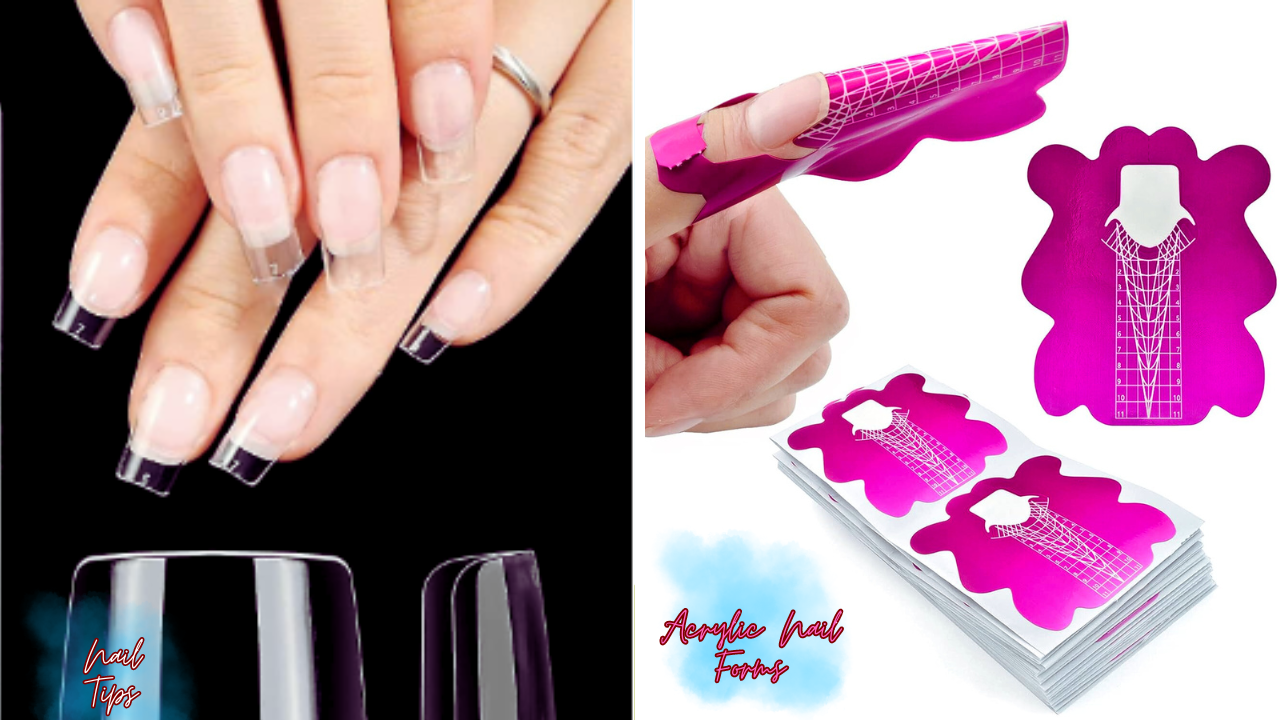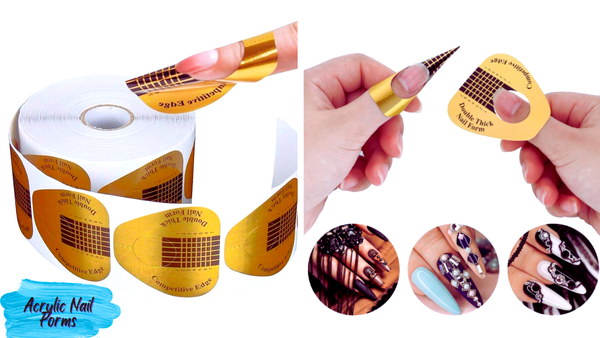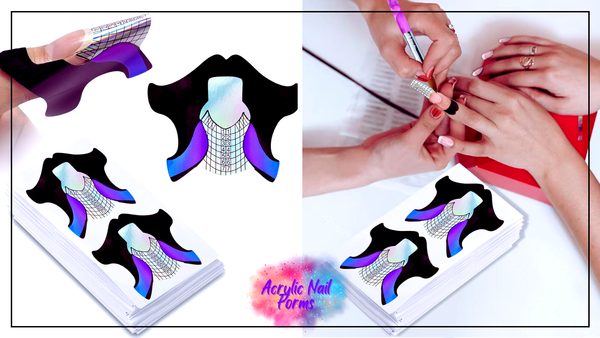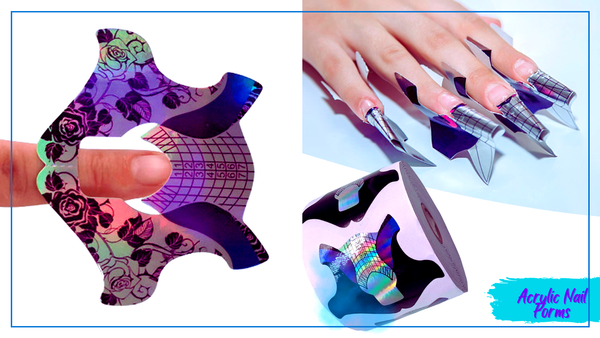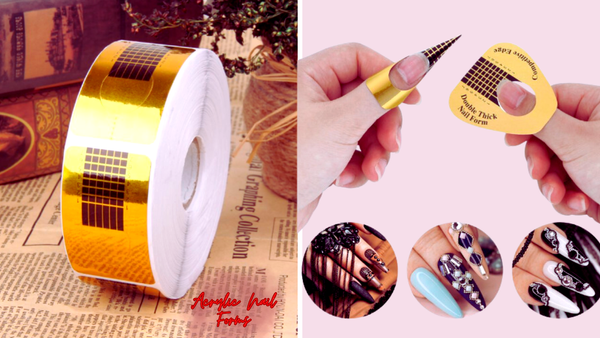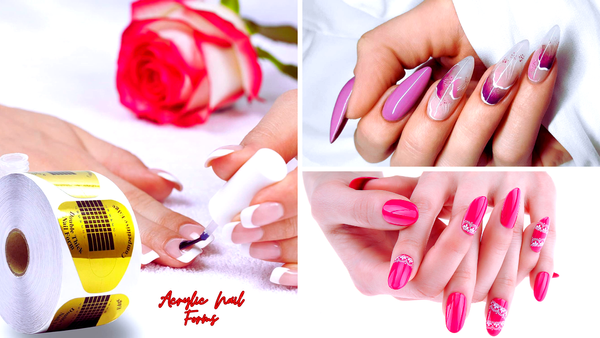Key Takeaways:
- Nail forms and tips serve different purposes and preferences in nail extension applications.
- Nail forms offer a customizable approach to creating the desired nail shape without fully covering the natural nail plate.
- Nail tips are generally easier and faster to apply but may not offer the same level of customization as nail forms.
Understanding Nail Extensions: Forms vs. Tips
Regarding nail extensions, the beauty industry offers two primary methods: nail forms and nail tips. Each technique has its advocates and specific use cases. Nail techs often have a preference based on their experience and the needs of their clients. But the question remains: are nail forms better than tips?
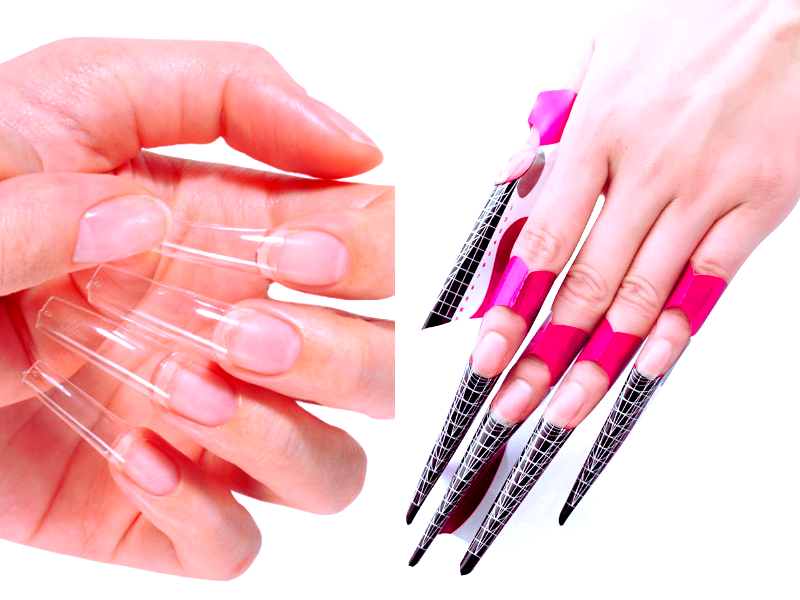
The Basics of Nail Forms
Nail forms are essentially large stickers that slide under the free edge of the natural nail. They are a temporary base upon which nail technicians can sculpt acrylic or gel extensions. Nail forms create the desired shape and length directly on the natural nail, allowing for a high degree of customization. They are particularly favored for extending nails without applying pressure on the nail plate.
The Appeal of Nail Tips
On the other hand, nail tips are pre-shaped pieces of acrylic plastic that are glued to the natural nail's free edge. They partially cover the nail bed and are then trimmed and shaped to the client's preference. Nail tips fully cover the nail bed, which can create pressure and potentially damage nails. However, they are generally faster to apply and require fewer products, making them a popular choice for nail techs and clients.
Nail Form Pros: Customization at Its Best
Nail forms are celebrated for their ability to create any nail shape and length directly on the client's natural nail. This method particularly benefits clients with unique nail shapes or those seeking a more natural look. Nail forms allow nail techs to sculpt the acrylic or gel precisely, ensuring a custom fit that can be more comfortable and less damaging to the natural nail.
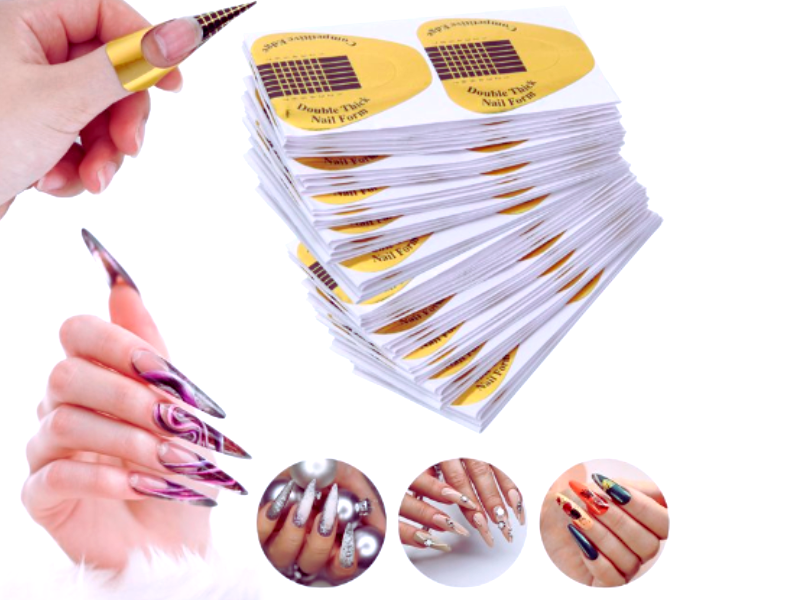
Tailoring to Each Client
With nail forms, nail technicians can tailor the extensions to the exact shape of the nail, accommodating any irregularities in the natural nail plate. This level of customization is not as easily achieved with pre-shaped nail tips, making nail forms a preferred choice for bespoke nail art and designs.
Nail Tip Pros: Quick and Convenient
Nail tips are a go-to for many nail techs due to their ease of use and time-saving benefits. The application process is straightforward: select the correct size, apply nail glue, and attach the tip to the natural nail. This method is less time-consuming than sculpting with nail forms, which requires more skill and patience.
Ideal for Beginners and Fast Paced Environments
For those new to the nail beauty industry or working in fast-paced salon environments, nail tips can be a practical solution. They offer a quick way to achieve beautiful nails without the intricate process involved with nail forms. Nail tips can be a great starting point for nail techs to hone their skills before moving on to more complex nail form applications.
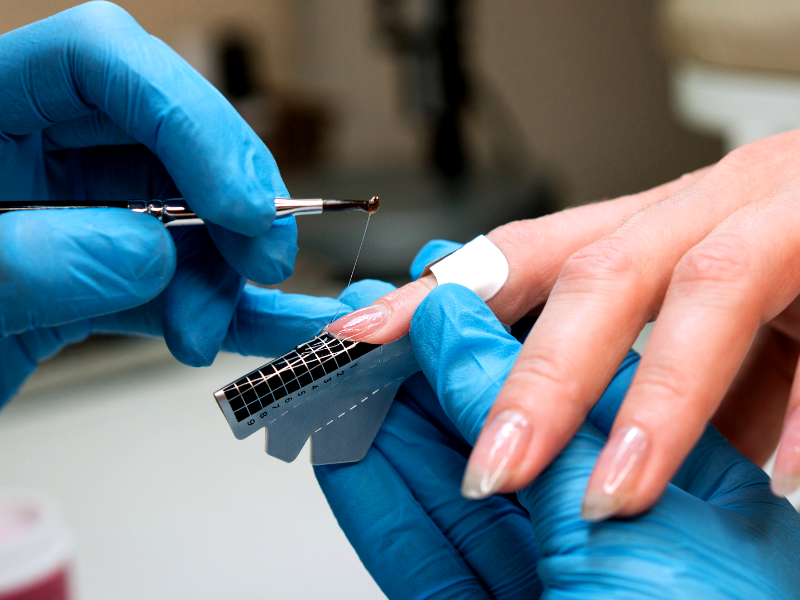
Nail Forms: A Few Downsides
While nail forms offer a high degree of customization, they also have drawbacks. The application process can be more time-consuming and requires a steady hand and a keen eye for detail. Additionally, nail forms can be intimidating for beginners, as they demand a certain skill level to create the desired shape and structure.
Embracing the Natural Nail: Nail Forms and Their Gentle Touch
Have you ever wondered if nail forms are kinder to your natural nails than traditional tips? Well, let's dive into that. Nail forms are designed to sit snugly under the natural nail's free edge, providing a temporary base for sculpting acrylic or gel extensions. This method is generally gentler since it doesn't require large stickers or heavy filing on the entire nail plate. Nail techs often prefer nail forms when aiming to preserve the integrity of the natural nail. By avoiding the use of nail glue and the pressure that tips can create, nail forms allow the natural nail to grow out healthily under the protection of the extension.
Moreover, nail forms partially cover the nail, so they don't fully encase the natural nail plate like tips do. This can be a significant advantage for those concerned about trapping moisture or creating pressure points that could lead to damage. Nail technicians can create the desired nail shape directly on the form, ensuring the natural nail remains as undisturbed as possible. This approach is especially beneficial for clients with weaker nails or those recovering from damage, as it supports an extension without the stress of a full cover.
The Art of Nail Extensions: Crafting Beauty with Precision
When creating beautiful nails, the precision and artistry involved in using nail forms are unmatched. Nail forms allow nail technicians to sculpt acrylic or gel into the exact shape and length desired by the client. This custom-fit is not just about aesthetics; it's about crafting an extension that feels comfortable and natural. Unlike pre-shaped tips that may not always align perfectly with the client's natural nail shape, nail forms are adaptable to each individual's unique nail contour. This means that clients can walk away with nails that look and feel tailor-made for them.
Applying nail forms may be more time-consuming than slapping on a set of tips, but the results are often worth the extra effort. For nail art enthusiasts, the level of detail achieved with sculpted extensions is a game-changer. From intricate designs to the perfect curve of a stiletto nail, the possibilities are endless. Nail techs who pride themselves on their artistry often choose nail forms over tips for this reason. It's about taking the time to create something truly special, a piece of wearable art that stands out in the nail beauty industry.
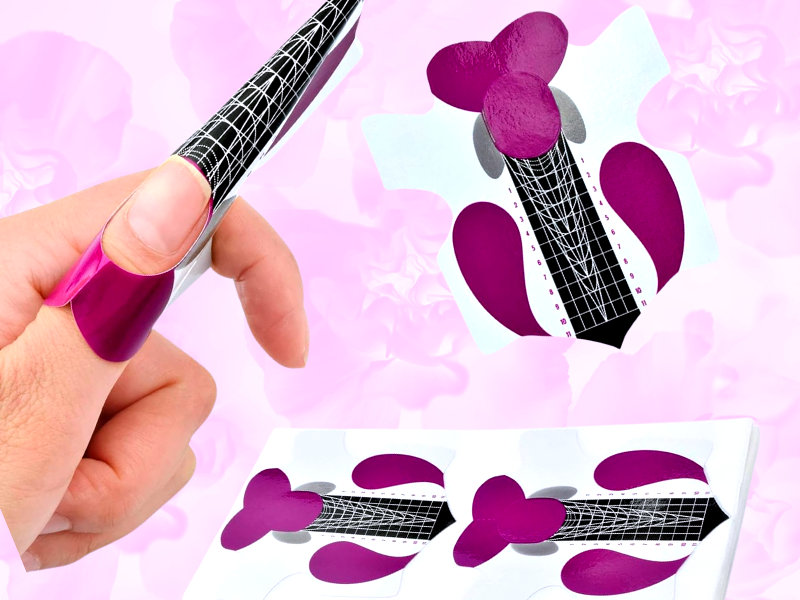
Skill and Patience Required
Nail forms necessitate a thorough understanding of nail anatomy and sculpting techniques. Nail techs must be adept at working with acrylic or gel to ensure the extensions are aesthetically pleasing and structurally sound. This learning curve can be a barrier for some, making nail tips a more accessible option for those starting in the nail industry.
Nail Tips: Not Without Their Issues
While nail tips are generally easier to apply, they are not without issues. The adhesive used to attach the tips can cause damage to the natural nail plate if not applied or removed correctly. Additionally, the pressure exerted by the tip on the natural nail can lead to discomfort or even damage over time.
Potential for Damage
The rigidity of acrylic tips can create pressure points on the natural nail, especially if the nail tip is not a perfect fit. This pressure can lead to nail damage or discomfort for the client. Nail techs must be vigilant in selecting the right size tip and applying it carefully to minimize these risks.
Nail Forms vs. Tips: The Nail Tech's Preference
Ultimately, whether nail forms or tips are better depends on the nail tech's preference and the client's needs. Nail forms offer more skillful customization, while nail tips provide a quicker and more straightforward application. Both methods have their place in the nail industry, and many nail techs have become proficient in both to cater to a wide range of client requests.
Balancing Artistry and Efficiency
Nail techs must balance the artistry of nail design with the efficiency of their work. Nail forms may be the preferred method for creating intricate designs or when working with clients who have specific nail shape requirements. Conversely, nail tips might be chosen for their speed and convenience, particularly for standard nail sets or when time is of the essence.
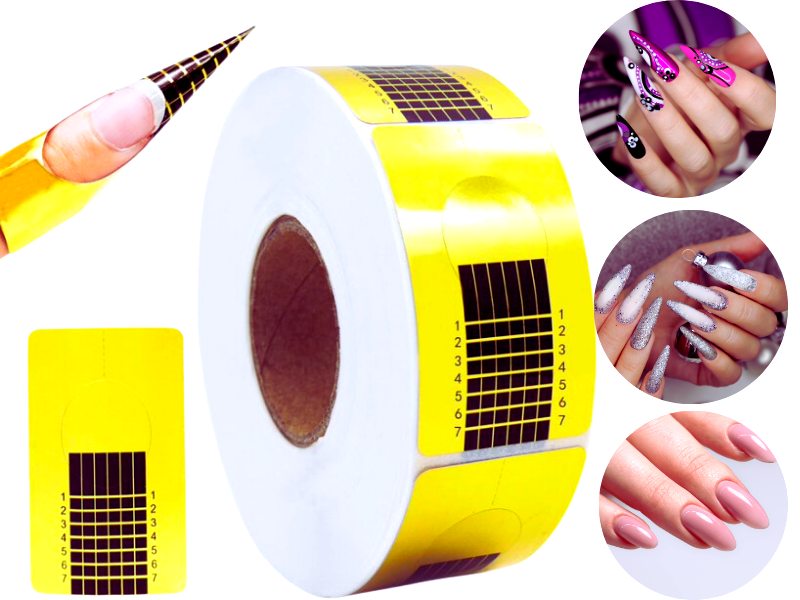
Nail Biters: A Special Consideration
For clients who are nail biters, nail forms can be a godsend. They allow the nail technician to extend the nail beyond the damaged area, providing a base for the nail to grow and heal. Nail tips, on the other hand, require a certain amount of natural nails to adhere to, which may not be possible for those with severely bitten nails.
Aiding in Nail Recovery
Using nail forms can aid in the recovery of damaged nails by providing a protective overlay that encourages natural nail growth. This can be a significant advantage for clients looking to improve the health and appearance of their nails, making nail forms a potentially better option in such cases.
The Verdict: It Depends
Whether nail forms or tips are better cannot be settled definitively. Each method has its advantages and disadvantages, and the best choice depends on various factors, including the client's natural nails, the desired outcome, and the nail tech's expertise.
Tailoring to Client Needs
Nail techs must consider each client's individual needs when deciding between nail forms and tips. Factors such as nail health, lifestyle, and personal preference all play a role in determining the most suitable method for nail extensions.
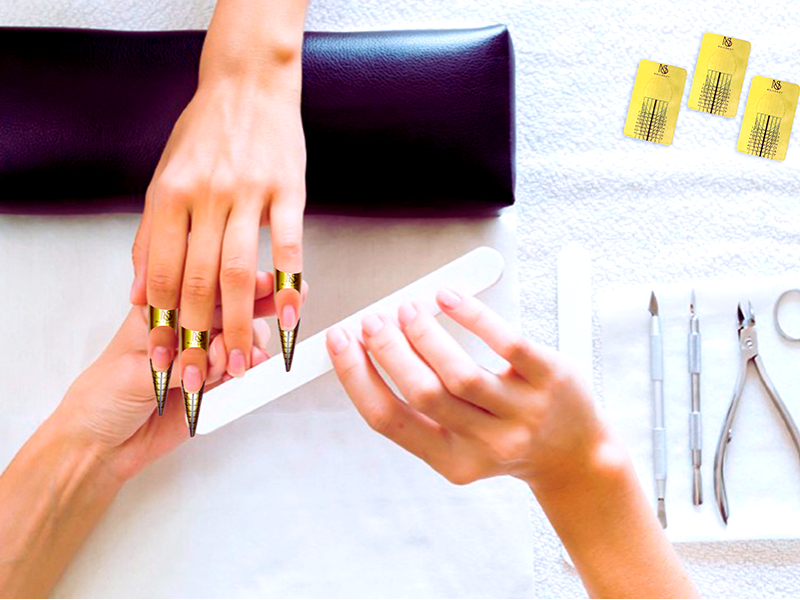
Summary
In the world of nail extensions, both nail forms and nail tips have their rightful place. Nail forms offer unparalleled customization and are ideal for creating unique, tailored nail shapes. Nail tips, while potentially less customizable, are quick to apply and suit fast-paced salon environments. The choice between the two often comes down to the specific needs of the client and the expertise of the nail technician.
FAQ Section
Can nail forms be used with both acrylic and gel nails?
Yes, nail forms can be used to sculpt both acrylic and gel nails. They provide a base for the nail tech to build upon, allowing for a custom shape and length.
Are nail tips or forms more damaging to the natural nails?
Both methods can potentially damage the natural nails if not applied or removed correctly. However, nail tips can create more pressure on the natural nail, which may lead to damage over time. Nail forms are less damaging as they do not exert the same pressure.
How long do nail extensions last using nail forms or tips?
The longevity of nail extensions can vary depending on the application method, the quality of the products used, and how well the client takes care of their nails. Generally, extensions can last anywhere from 2 to 4 weeks before requiring maintenance or removal.
